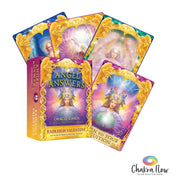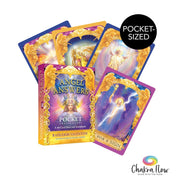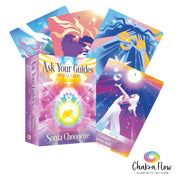Tarot cards and oracle cards are both tools used for divination and self-reflection, but they have some key differences. Here are the main distinctions between tarot and oracle cards:
-
Historical Origins:
-
Tarot Cards: Tarot cards have a long history dating back to the 15th century. Originally used for card games, they evolved into a tool for divination and spiritual insight.
-
Oracle Cards: Oracle cards have a more recent origin and are a diverse category. They don't have a standardized history and can vary widely in terms of design, structure, and purpose.
-
Number of Cards:
-
Tarot Cards: A standard tarot deck consists of 78 cards, divided into the Major Arcana (22 cards) and the Minor Arcana (56 cards).
-
Oracle Cards: Oracle decks can have varying numbers of cards, ranging from a few to over a hundred. There is no standardized structure, and each deck can be unique.
-
Structure and Themes:
-
Tarot Cards: Tarot decks have a structured system with specific meanings for each card. The Major Arcana follows a storyline, while the Minor Arcana is divided into suits (Cups, Wands, Swords, Pentacles).
-
Oracle Cards: Oracle decks have more flexibility in terms of structure and themes. They can be based on angels, animals, fairies, chakras, or other themes. Each deck creator determines the structure and meanings.
-
Imagery and Symbolism:
-
Tarot Cards: Tarot cards often have rich symbolism with consistent imagery across different decks. Each card has traditional symbols and meanings.
-
Oracle Cards: Oracle decks may have more diverse and varied imagery. They can include illustrations, photographs, or abstract art, and the symbolism is often more intuitive and open to interpretation.
-
Reading Approach:
-
Tarot Cards: Tarot readings often follow established spreads and layouts. Readers interpret the cards based on traditional meanings and their positions in the spread.
-
Oracle Cards: Oracle readings may be more intuitive and free-form. Readers can interpret cards based on their feelings, the imagery, or the messages written on the cards. There's often less emphasis on a fixed system.
-
Learning Curve:
-
Tarot Cards: Learning tarot may have a steeper curve due to the structured nature and the need to memorize meanings and symbolism.
-
Oracle Cards: Oracle cards are often considered more accessible for beginners. The lack of a standardized system allows for more intuitive and personal interpretations.
Tarot decks follow a standardized structure with a set number of cards and specific meanings, while oracle decks can vary widely in terms of the number of cards, themes, and interpretations. Tarot readings often involve established spreads and layouts, while oracle readings may be more intuitive and open-ended. The choice between tarot and oracle cards ultimately depends on personal preferences, the level of structure desired, and the specific themes or symbols that resonate with the reader. Both can be valuable tools for self-reflection, divination, and gaining insights into various aspects of life.











































